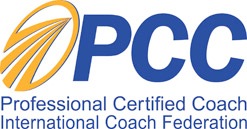AdultLeader Practices
Are You Sending the Message You Want?
You are always sending a message. What you do or don’t do, say or don’t say, follow up on or don’t follow up on sends a message to others – staff, peers, bosses, clients, loved ones… The message will create a perception of who you are, what is important to you, what you think about yourself, and what you think about them. If you take a moment to consider what perception might be created and check if this is congruent with the perception you would like to create, then you might reconsider. As a leader, am I sending the message I want (a message likely to create the perception I want with staff, peers, bosses, clients, loved ones)? This is a great question to ask as you go through your day and make choices about how you prioritize and spend your time. The cumulative effect of your choices will contribute to creating your leadership brand with others. If that matters, then interrupt what you are about to do without thinking, and ask yourself the following questions: 1. What message am I sending by doing or not doing this, saying or not saying this, following up on or not following up on this? 2. What message do I want to send? Or what message is it important for me to send? 3. What effect will my choice have on my leadership brand? Take a moment and send your comments and questions. If you were reminded of something, learned something, or questioned something, taking a moment to write it down will ground your observation and may inspire some future action. WANT TO USE THIS ARTICLE IN YOUR E-ZINE, BLOG, OR WEB SITE? You can, as long as you include this complete statement at the end of the article: © 2013 Stephen Carr Associates, Inc. Stephen Carr is a successful, Boston-based Executive Leadership Coach. He can be found at www.stephencarrexecutivecoach.com AND...
Read MoreFocus On The Positive For Increased Effectiveness
Focusing on the positive is more than just positive thinking, and it is not about avoiding or ignoring the negatives or problems. • It is about strengthening the foundation of the organization by focusing on the successes, wins, strengths, and talents of individuals and teams. • It is about reducing the stress, anxiety, and general organizational unhappiness that limits our human ability to make good decisions, deal with everyday challenges, be creative and innovative, and learn and grow together. • It is about making us all happier and improving employee engagement. • It is a way for leaders to help overcome the natural tendency of the brain to focus on the negative. “According to Dr. Rick Hanson, a neuropsychologist, a member of U.C. Berkeley’s Greater Good Science Center’s advisory board, and author of the book Hardwiring Happiness: The New Brain Science of Contentment, Calm, and Confidence, our brains are naturally wired to focus on the negative, which can make us feel stressed and unhappy even though there are a lot of positive things in our lives.” He says we have “brains that are incentivized toward seeing the negative… so deliberately looking for the positive… just kind of levels the playing field.” (From How to Build a Happier Brain in The Atlantic by Julie Beck). If this is true, then leaders have a responsibility to increase focus on the positive in order to reduce stress, anxiety, and general organizational unhappiness and increase employee engagement. There is a real opportunity if we look at the results of some recent studies on employee engagement: • A recent Towers Watson survey indicated that nearly two–thirds of U.S. employees are not fully engaged in their work and are less productive as a result. • Dale Carnegie and MSW did a study showing that 29% of the workforce is engaged, 45% are not engaged, and 26% are actively disengaged. • According to Gallup, over 23 million U.S. workers are actively disengaged. Focusing on the positive is certainly not the only answer to improving employee engagement. Even if all that happened was to shift your own habits toward a more positive outlook, think of how that might affect your decisions, interactions, communications, and influence. Here are 3 things you can do to focus on the positive and strengthen your team or organization: 1. Provide real acknowledgment to individuals and teams. Do this often, both formally and informally. This is more than just a pat on the back for a job well done. It is a statement that specifically identifies the positive result. Follow this by naming the strengths, qualities, and behaviors that were exhibited, and the resulting impact on the situation, team or organization. 2. Debrief initiatives, projects, and team and organizational results. Do this more formally. Identify what worked and went well, whether or not it was completely successful. • What did we accomplish? • Who was involved? • How well did we work together across the team or organization? • Highlight the strengths, positive qualities, and positive behaviors that were exhibited by the individuals and team(s) involved. • Debrief the processes and communication that worked. You may want to define best practices. • Follow this by debriefing what didn’t work so well and what needs to improve. Be specific. • Define next steps. What will we begin changing or improving right now? What will we aspire to in the future? Who will we aspire to become in the future? 3. Provide context and positive evidence in the face of challenge. Challenge will always be present in organizational life. It can be the next big thing that we haven’t tackled before, or a problem we didn’t anticipate and wish we didn’t have to deal with. You can provide evidence of past successes and exhibited abilities. You can highlight the strengths, talents, and qualities that exist on the team. You can provide a larger context that can reframe the challenge into an opportunity for the organization to become more than it was prior to that challenge. You can inspire. By providing a positive focus, you, as...
Read MoreYou Are Not Your Thoughts
Are you your thoughts? Most of us probably hope not. The National Science Foundation reports that humans have 12-50,000 thoughts per day. Except for you deep thinkers out there, the vast majority of these thoughts are nonsense. “Most of them are not facts but evaluations and judgments entwined with emotions—some positive and helpful (I’ve worked hard and I can ace this presentation; This issue is worth speaking up about; The new VP seems approachable), others negative and less so (He’s purposely ignoring me; I’m going to make a fool of myself; I’m a fake).” (From their recent article in the Harvard Business review, Emotional Agility, Susan David and Christina Congleton). It is estimated that for most of us, 70-80% of our thoughts are negative. These negative thoughts limit us. Most of us share some or all of these challenges at one time or another: feeling overwhelmed, indecisive, or fearful; experiencing lack of focus or procrastination; acting out emotionally. In our executive coaching conversations, my clients usually discover that it is their thoughts that have gotten the better of them, causing them to be stuck or less effective than they are capable of being. It is easy to identify with our familiar and repetitive thoughts. We believe them as facts and they are not. We react in that familiar and repetitive way. When we can step back and more objectively look at the situation or challenge, we can choose to respond in a way that is more likely to represent the leader we want to be and to accomplish the result we would like. Dr. Dan Siegel says … “Objectivity permits us to have a thought or feeling and not become swept away by it. It recruits the ability of the mind to be aware that its present activities – our thoughts, feelings, memories, beliefs, and intentions – are temporary and, moreover, that they are not the totality of who are. They are not our identity.” As leaders, you can develop this ability of your mind through: 1. Practice – being mindful that you are not your thoughts. “I am having this thought about…” 2. Becoming more consciously aware of your identity, values, natural strengths and positive qualities. If you are not your thoughts, then who are you? What does the evidence suggest? Who is noticing that you are having a thought? 3. Recognizing and being OK with your imperfections. “I don’t have to do everything well and perfect. In fact, it is impossible.” Developing the ability to separate who you are from your thoughts is not as simple as making these statements or answering these questions. It comes from increasing your self-awareness, and with practice, improving your leadership ability to step back and be more objective and practical about the situation or challenge before you. Please feel free to send your comments and questions. WANT TO USE THIS ARTICLE IN YOUR E-ZINE, BLOG, OR WEB SITE? You can, as long as you include this complete statement at the end of the article: © 2013 Stephen Carr Associates, Inc. Stephen Carr is a successful, Boston-based Executive Leadership Coach. He can be found at www.stephencarrexecutivecoach.com AND...
Read More







